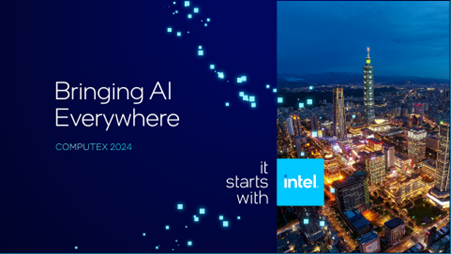The AI PC race has begun, catalyzed by Microsoft’s Copilot+, and the entry requirement for an AI PC is 40 TOPS using a neural network processing unit such as tensor cores, NPU, or GPU. With this benchmark set, market segmentation will follow, with 40 TOPS being good, 80 TOPS better, and over 119 TOPS best. Power consumption will also play a role, though an industry standard like Pmark (price, performance, power) is yet to be established. Intel is expected to announce its AI PC CPU, Lunar Lake, featuring a Battlemage iGPU capable of over 100 TOPS at Computex, positioning it in the “better” category.

The AI PC race has begun, with Microsoft’s Copilot+ as the catalyst that makes an AI PC useful. Along with the announcement of Copilot+ was the entry fee—40 TOPs and some kind of a neural network processing unit, which could be tensor cores, an NPU, or a GPU. Whatever the architecture, it has to hit 40 TOPS to be a contender.
Once a bar like that is established, then the market segmentation begins. So, 40 TOPS will be good, 80 TOPS will be better, and greater than 119 TOPS will be best. The segmentation names will vary by manufacturer, but the results will be the same. The thresholds between segments may be argued over too, but it will sort itself out.
Power consumption will also be a factor, and the industry hasn’t settled on an equation like the Pmark (price, performance, power) yet, so maybe that will be left to us analysts.
Intel will make a big announcement at Computex about its forthcoming AI PC CPU Lunar Lake with a Battlemage iGPU that could bring over 100 TOPS to the chip, putting it in the middle of the Better class.

The Battlemage’s XMX matrix engines are expected to deliver 60 TOPs, while Lunar Lake’s NPU is expected to give up 45 TOPS.
The recently announced slew of Snapdragon X Elite notebooks are expected to offer 40 TOPs, which puts them in the Good category.
Systems with an NPU-based CPU from AMD (Strix Point) or Intel (Lunar Lake) and a dGPU will be in the Best category, and the dGPU suppliers—AMD, Intel, and Nvidia—are poised to fill that slot now.

We haven’t heard anything about Lunar Lake’s power draw yet; that will probably be revealed at Computex. It’s going to be a big AI show for sure.